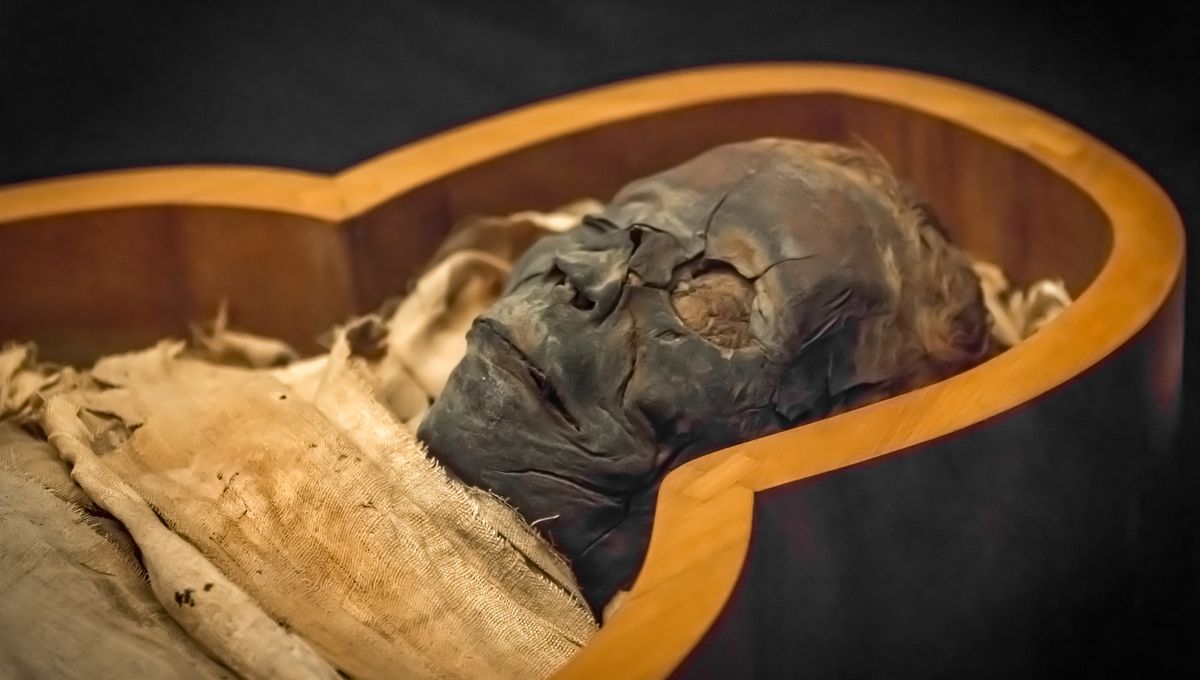
The oldest confirmed case of the plague outside of Eurasia has been detected in an ancient Egyptian mummy. Dating back to around 3,290 years ago, the embalmed remains belong to a male individual who was likely suffering from severe symptoms at the time of his horrific death.
The bubonic plague – also known as the Black Death – is caused by a thoroughly nasty bacterium called Yersinia pestis, and had its heyday in the 14th century when it spread across Europe, wiping out millions of people. In recent years, several studies have found traces of Y. pestis DNA in prehistoric corpses, indicating that the pathogen – and the disease – was in circulation thousands of years before this infamous pandemic.
So far, all of these ancient examples have come from Europe and Asia, with evidence of infection seen in 5,000-year-old skeletons in Russia. However, after analyzing an ancient Egyptian mummy housed at the Museo Egizio in Turin, Italy, a team of researchers has now revealed that the dreaded plague was also present in North Africa at the dawn of the Bronze Age.
Radiocarbon dated to the end of the Second Intermediate Period or the beginning of the New Kingdom, the mummy contained traces of Y. pestis DNA in both its bone tissue and intestinal content, suggesting that the disease had already progressed to an advanced stage when the infected individual succumbed.
“This is the first reported prehistoric Y. pestis genome outside Eurasia providing molecular evidence for the presence of plague in ancient Egypt, although we cannot infer how widespread the disease was during this time,” write the researchers in an abstract that was presented at the European Meeting of the Paleopathology Association earlier this year.
Despite this lack of clarity over the prevalence of the Black Death in ancient Egypt, previous studies have hinted at possible outbreaks along the banks of the Nile in historic times. For instance, more than two decades ago, researchers found fleas at an archaeological village in Amarna, where the workers who built Tutankhamun’s tomb once lived.
Because fleas are the bacteria’s main carrier, the researchers began to suspect that the bubonic plague may have existed in ancient Egypt. This hypothesis is strengthened by a 3,500-year-old medical text called the Ebers Papyrus, which describes a disease that “has produced a bubo, and the pus has petrified.”
Some researchers therefore believe that the plague may have been spread by fleas that piggybacked on Nile rats, before later crossing over to the black rats that stowed away on ancient ships and carried the Black Death across the world. Until now, however, this theory had lacked a smoking gun proving that the disease was in fact present in ancient Egypt.
And while we’re still waiting for a full manuscript of the new study, it’s gotta be said that guns don’t get much smokier than mummy DNA.
Source Link: Black Death DNA Found In 3,300-Year-Old Egyptian Mummy